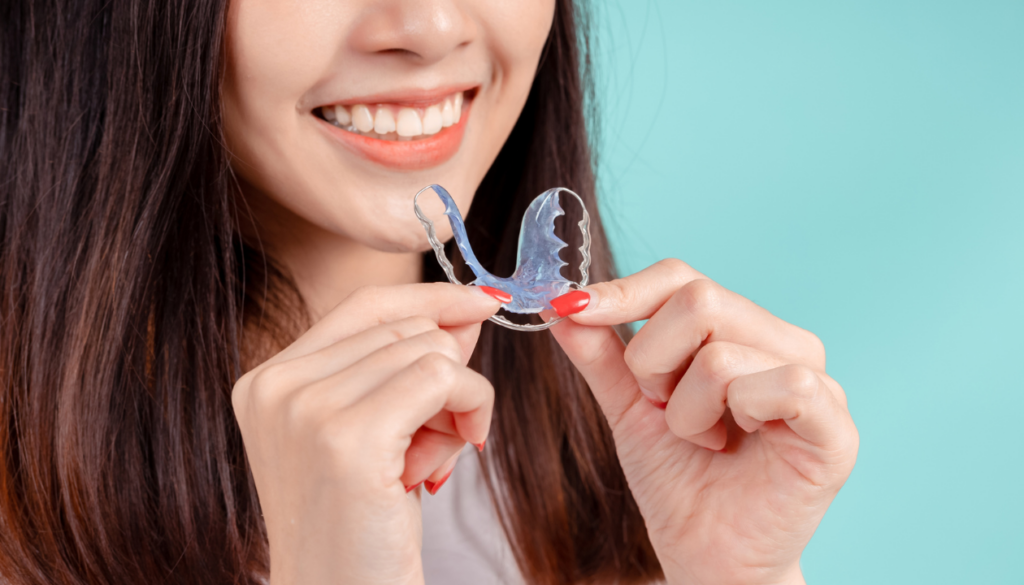If you’ve just completed your orthodontic treatment, you might be wondering about the next steps. Retainers for teeth play a crucial role in maintaining that beautiful smile you’ve worked so hard to achieve.
They help keep your teeth in their new positions and prevent any unwanted shifting over time.
Understanding the importance of retainers can make a significant difference in your dental journey. Whether you’re considering fixed or removable options, knowing how to care for them and when to wear them is essential.
Let’s dive into the world of retainers and explore how they can keep your smile straight and healthy for years to come.
What Are Retainers for Teeth?
Retainers for teeth are custom-made devices designed to maintain the position of teeth after orthodontic treatment. Popular among individuals who have undergone braces or clear aligners, these devices help prevent teeth from shifting back to their original positions.
Fixed retainers consist of a thin wire bonded to the back of the teeth. This option offers stable support, especially for teeth that are more likely to move.
Removable retainers, like the Essix or Hawley types, allow for easy cleaning and removal. Each type caters to specific orthodontic needs, making it essential to consult with an orthodontist for the best choice.
Using retainers requires discipline and attention to care. Wearing them as instructed, typically for a set number of hours daily or at night, ensures long-term effectiveness.
Regular cleaning and maintenance are crucial to prolong the device’s lifespan and maintain oral hygiene.
Why Are Retainers Necessary?
Retainers play a crucial role in preserving the results of orthodontic treatment. They keep teeth in their new positions and prevent unwanted movement over time.
Preventing Teeth Movement
Retainers prevent teeth from shifting back to their original positions after braces or clear aligners. When you complete orthodontic treatment, the surrounding bone and tissue need time to adjust.
Wearing retainers ensures that your teeth remain stable during this period. Various studies indicate that without retainers, up to 50% of patients may experience noticeable shifting within a few months post-treatment.
Adhering to your orthodontist’s guidelines regarding retention schedules significantly increases the chances of maintaining proper alignment long-term.
Maintaining Smile Aesthetics
Retainers contribute significantly to maintaining the aesthetics of your smile. After investing time and money into achieving a straighter smile, preserving that appearance is essential.
A well-fitting retainer prevents gaps and misalignments from forming, allowing your smile to remain visually appealing. Structures like fixed or removable retainers ensure that your teeth align appropriately while preventing adjustments that may alter how your smile looks.
Regularly wearing your retainer minimizes the risk of visible changes, helping you to enjoy your beautiful smile for years to come.
Types of Retainers
Understanding the types of retainers helps you make informed decisions about maintaining your smile. The main categories are removable retainers and fixed retainers.
Removable Retainers
Removable retainers, such as Hawley and clear plastic types, offer flexibility and convenience. They allow you to take them out while eating or brushing, making it easy to maintain oral hygiene.
Hawley retainers consist of an acrylic base that fits over the roof of your mouth or along the tongue side, with wires that hold the teeth in place. Clear plastic retainers, like Essix, fit snugly over your teeth and are nearly invisible.
Both options can be custom-made for comfort and effectiveness. Regular cleaning and proper handling are essential for their durability and function.
Fixed Retainers
Fixed retainers provide continuous support by adhering to the back of your teeth. They consist of a thin wire bonded to the teeth, offering a discreet solution for long-term retention.
Fixed retainers are particularly beneficial for the front teeth, where alignment is crucial. Although they don’t require removal, they necessitate diligent oral care, including regular brushing and flossing around the wire.
Depending on individual needs, your orthodontist may recommend fixed retainers for additional stability after treatment.
Proper Care for Your Retainer
Proper care for retainers ensures longevity and effectiveness. Implementing good cleaning and maintenance practices is crucial for optimal oral hygiene and Retainer function.
Cleaning Procedures
Clean your retainer daily to prevent plaque buildup and odors. Use a soft toothbrush and mild soap or specialized retainer cleaner. Avoid toothpaste, as it can be abrasive.
Rinse your retainer with lukewarm water before and after meals, and soak it in a cleaning solution at least once a week. For fixed retainers, brush around the wire thoroughly to maintain gum health.
Avoiding Damage
Handle your retainer with care to avoid cracking or distortion. Keep it in its case when not in use. Avoid exposing it to high temperatures, such as hot water or direct sunlight, which can cause warping.
Remove your retainer while eating, and don’t place it in a napkin, as it can easily get thrown away. If you notice any signs of damage, contact your orthodontist for advice or replacement options.
Cost of Retainers
Understanding the cost of retainers is crucial for budgeting your orthodontic treatment. Pricing varies based on several factors and may also involve insurance considerations.
Factors Influencing Price
- Type of Retainer: Removable retainers typically cost between $100 and $400, while fixed retainers can range from $200 to $500.
- Material Used: Clear plastic retainers, such as Invisalign, often carry a higher price tag than traditional Hawley retainers.
- Customization: Custom-fit retainers may be more expensive due to the personalized fabrication process.
- Orthodontist’s Experience: Your orthodontist’s expertise and location affect pricing, with established professionals in metropolitan areas usually charging more.
- Follow-Up Care: Some retainers require periodic adjustments, which can add to the overall expense.
Insurance Considerations
Most dental insurance plans cover a portion of retainer costs, but coverage varies significantly. Confirm your policy specifics, as some plans might cover only a percentage of the final price or have a yearly limit.
You might need pre-approval from your insurer before purchasing retainers. Contacting your insurance provider ensures you understand the coverage details, deductibles, and potential out-of-pocket costs.
Addressing Common Concerns
Retainers play a vital role in maintaining the alignment of your teeth. However, several common concerns may arise regarding their fit, care, and maintenance.
My Retainer Doesn’t Fit Anymore
Retainers may not fit properly for several reasons, including weight changes, changes in teeth positioning, or a lack of consistent use. If your retainer feels tight, it might indicate that teeth have shifted.
Contact your orthodontist promptly to assess the situation and determine the next steps. They may recommend adjustments or the creation of a new retainer to ensure optimal fit and function.
Avoid attempting to force the retainer into place, as this can cause damage.
Odor Issues with Removable Retainers
Odor can develop in removable retainers if they are not adequately cleaned. Proper hygiene practices include rinsing the retainer with lukewarm water before and after meals and cleaning it daily with a soft toothbrush, mild soap, or a specialized retainer cleaner.
Avoid toothpaste to prevent abrasiveness. If odors persist, soaking the retainer in a cleaning solution weekly can help eliminate bacteria and buildup.
For stubborn odors, consider consulting your orthodontist for advice on effective cleaning solutions or products. Proper care ensures both comfort and the longevity of your retainer.
Conclusion
Wearing retainers is essential for preserving your beautiful smile after orthodontic treatment. By understanding the different types of retainers and committing to proper care, you can ensure your teeth stay in their new positions.
Regular use and maintenance of your retainer not only prevent shifting but also promote overall oral health. Remember to follow your orthodontist’s instructions and prioritize cleaning to extend the life of your retainer.
Investing time in your retainer routine means you’ll enjoy the benefits of a straight smile for years to come. Keep your smile shining bright by making retainers a part of your daily life.
Frequently Asked Questions
Why are retainers necessary after orthodontic treatment?
Retainers are essential after orthodontic treatment to prevent teeth from shifting back to their original positions. The surrounding bone and tissue require time to adjust, and wearing retainers helps maintain the new alignment until this process is complete.
What types of retainers are available?
There are two main types of retainers: removable and fixed. Removable retainers, like Hawley and clear plastic types, can be taken out for eating and cleaning. Fixed retainers consist of a thin wire bonded to the back of teeth for continuous support.
How do I care for my retainer?
To care for your retainer, clean it daily with a soft toothbrush and mild soap or retainer cleaner. Rinse it with lukewarm water before and after meals, and soak it in a cleaning solution weekly. Handle with care and store it in its case when not in use.
How much do retainers cost?
Costs for retainers can vary. Removable retainers typically range from $100 to $400, while fixed retainers may cost between $200 and $500. Prices depend on the type, materials, and the orthodontist’s expertise.
Is insurance coverage available for retainers?
Most dental insurance plans cover a portion of retainer costs, but coverage varies. It’s advisable to check your insurance policy and consult your provider for specifics, including deductibles and out-of-pocket expenses.
What should I do if my retainer doesn’t fit?
If your retainer feels tight or uncomfortable, it may not fit properly due to weight changes or teeth shifting. Contact your orthodontist for adjustments instead of forcing it to fit.
How can I prevent odor in my retainer?
To prevent odor in removable retainers, clean them daily and soak them in a cleaning solution weekly. Rinse with lukewarm water before wearing, and ensure thorough cleaning to eliminate bacteria buildup.
RJ Orthodontics: Your Perfect Smile Starts Here—Schedule Today!
At RJ Orthodontics, we’re dedicated to providing personalized orthodontic care for patients of all ages. From traditional braces to clear aligners, we offer customized solutions for every smile.
Schedule your consultation today and begin your journey to a straighter, healthier smile. Don’t wait—spaces are limited, so act fast!


